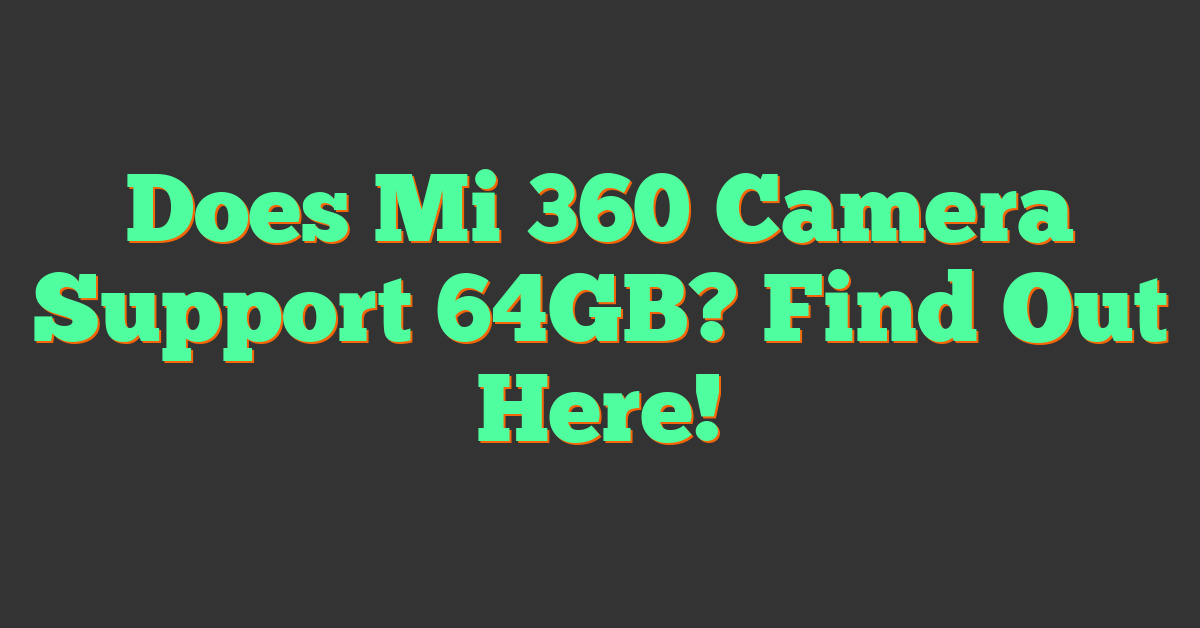Key Takeaways
- Budget 360 cameras under $200 provide an affordable entry point into immersive photography and videography, perfect for beginners and hobbyists.
- Most models offer 4K video resolution and 16-18 MP photo quality, ideal for social media and VR platforms despite lacking professional-grade sharpness.
- These cameras are compact, lightweight, and portable, making them convenient for travel, vlogging, or casual shooting.
- User-friendly features like app integration, automatic stitching, and simple controls make them accessible for those new to 360 content creation.
- Battery life typically averages 60-90 minutes, and most models rely on microSD cards for storage, so additional memory costs should be considered.
- Examples like the Qoocam Fun, Ricoh Theta SC, and Insta360 GO 2 offer standout performance for their price, each catering to different needs and use cases.
Capturing immersive 360-degree photos and videos doesn’t have to break the bank. With advancements in technology, there are plenty of budget-friendly 360 cameras that deliver impressive quality without costing a fortune. If you’re looking to explore the world of panoramic photography or create engaging virtual content, you don’t need to spend more than $200.
I’ve reviewed some of the best affordable 360 cameras that pack great features for their price. From image quality to ease of use, these options prove you can get stunning results without overspending. Let’s dive into which cameras stand out and why they’re worth considering.
Budget 360 Cameras: What To Expect Under $200
Finding quality 360 cameras under $200 might seem challenging, but advancements in technology have made this price range rich with usable options. These cameras focus on core functionality while keeping costs low, making them perfect for beginners, hobbyists, and enthusiasts exploring immersive photography and videography.
Image and Video Resolution
Budget 360 cameras generally offer resolutions around 4K for video and 16-18 MP for photos. Although not as sharp as premium models, these resolutions capture immersive content ideal for social media and VR platforms. For example, models like the Insta360 GO 2 or Ricoh Theta SC provide smooth video capture with decent detail despite their budget category.
User-Friendly Features
Ease of use often defines these cameras. Simplified control layouts, mobile app integration, and basic editing tools make them suitable for those just starting with 360 content. Cameras in this price range typically include automatic stitching software, so users can render ready-to-share panoramas with minimal effort.
Compact and Lightweight Designs
Expect lightweight, portable builds. Cameras priced below $200 cater to those seeking a grab-and-go solution for travel, vlogging, or casual shoots. Devices like the Samsung Gear 360 (2017 edition) prioritize portability and convenience without compromising basic features.
Limited Professional Features
While great for hobbyists, these cameras usually lack advanced options like raw file support, manual exposure settings, or high dynamic range (HDR). Budget models are ideal for everyday scenes but might struggle with professional-grade outputs or low-light conditions.
Battery Life and Storage
Low-cost 360 cameras often provide 60-90 minutes of battery life on a full charge. Many rely on microSD cards for storage, so factoring in the cost of additional memory might be essential when budgeting for these devices.
Examples of Value
Affordable models excel at introducing users to immersive content without financial risk. Devices like the Qoocam Fun and Mi Sphere 360 prove that it’s possible to achieve breathtaking 360-degree shots without the expense of professional equipment.
Key Features To Look For In Budget 360 Cameras
« Top 3 Best 360 Cameras for Low-Light Conditions You Need to See
Master Drone 360 Cameras: Essential Legal Flying Tips for Stunning Aerial Shots »
Finding the right 360 camera under $200 involves understanding which features provide the best value for the price. I focus on factors that directly affect usability and performance to help you make an informed decision.
Image And Video Quality
A 360 camera’s primary purpose is capturing immersive visuals, so resolution is crucial. Look for cameras offering at least 4K video recording, as this standard ensures clear and detailed footage for social media or VR. For still photos, aim for models with 16-18 MP sensors to prevent pixelation during editing or zooming. Some budget options also include HDR imaging (e.g., Ricoh Theta SC), which enhances picture quality in high-contrast scenes.
Battery Life
Battery life impacts continuous shooting or recording, especially during outdoor activities or events. Most budget 360 cameras provide 50-80 minutes of recording per charge. Prioritize models with removable batteries if extended usage is required. For instance, the Xiaomi Mi Sphere’s battery life, while limited, is often enough for casual sessions. I recommend carrying a portable charger for longer recording needs.
Portability And Design
Compact and lightweight cameras are essential for travel and casual use. Cameras like the Insta360 GO 2 weigh under 30 grams, offering great portability for daily shoots or action scenarios. Consider designs with durable housings or waterproofing if you plan to shoot outdoors. A slim form factor also makes handheld shooting or mounting on accessories hassle-free.
Compatibility With Devices And Apps
App integration simplifies control and post-production, making compatibility an essential feature. Most budget cameras support iOS and Android via dedicated apps, streamlining video stitching and editing. Prioritize models with stable app connections and frequent updates for optimal user experience. For example, Qoocam Fun connects reliably with smartphones, providing features like instant sharing and 360 editing directly on your device. Also, check app requirements to ensure compatibility with your smartphone’s camera and system.
Top Budget 360 Cameras Under $200 Reviewed
Finding a reliable 360 camera under $200 is exciting for photography and videography enthusiasts like me. These affordable options deliver great performance for creating immersive content. Below, I’ll review three standout models based on their features, pros, and cons.
Camera 1: Features, Pros, And Cons
Qoocam Fun
This compact, smartphone-compatible camera is perfect for casual creators. It plugs directly into Android devices with a USB-C connection, eliminating the need for additional accessories. The camera captures 4K 360-degree videos and 30 MP photos, delivering sharp visual quality.
- Pros: The Qoocam Fun is lightweight at 60 g and highly portable. Its plug-and-play usability with a seamless app connection makes editing on the go effortless.
- Cons: It’s limited to Android devices, and the app doesn’t support advanced editing. Battery life depends on the connected smartphone’s power.
The Qoocam Fun is an excellent choice for beginners looking to explore 360 content creation.
Camera 2: Features, Pros, And Cons
Ricoh Theta SC
The Ricoh Theta SC balances quality and affordability. It offers 14 MP still photos and 1080p 360-degree videos at 30 fps, rendering decent visuals for its price. Its intuitive design and app support simplify shooting.
- Pros: This model’s dual-lens system ensures clean stitching of 360 shots. Its user-friendly interface and compact body make it beginner-friendly.
- Cons: The non-removable battery provides only 60 minutes of recording. Limited resolution might reduce sharpness compared to higher-end models.
For those wanting a user-friendly camera without overspending, the Ricoh Theta SC delivers solid results.
Camera 3: Features, Pros, And Cons
Insta360 GO 2
Though tiny, the Insta360 GO 2 surprises with powerful features. It enables 1440p 360-degree video shooting, making it ideal for dynamic shots. Its magnetic mounting capability supports flexibility in angles.
- Pros: This camera is ultra-portable, weighing just 27 g, and includes FlowState stabilization for smooth footage. The app provides robust editing tools.
- Cons: Its video quality caps at 1440p, which may not suffice for high-detail needs. Battery capacity limits use to around 30 minutes per charge.
The Insta360 GO 2 is perfect for travel and capturing spontaneous 360 moments.
Comparison Of Top Picks
Finding the best 360 cameras under $200 requires looking closely at both performance and value. I’ve explored how these models deliver on their promises, providing practical insights for photographers, videographers, and VR enthusiasts.
Performance And Usage
Performance largely depends on resolution, stabilization, and app integration. The Qoocam Fun excels with its 4K video and 30 MP photos, offering detailed visuals that impress for its price. However, its Android-only compatibility limits its audience, and the lack of iOS support might deter potential users.
The Ricoh Theta SC strikes a solid balance, though its 1080p video resolution is lower than others on this list. It’s a reliable choice for casual creators who prioritize ease of use over cutting-edge quality. Additionally, its simplicity and effective stitching make it beginner-friendly, an essential feature for those new to 360 photography.
The Insta360 GO 2 stands out for portability and intuitive controls. Its 1440p video quality falls between the other two models, but the stabilization ensures smoother footage, perfect for capturing dynamic scenes. Its lightweight, wearable design is also perfect for active shoots, though the limited recording time can be a drawback.
Value For Money
When comparing value, the Qoocam Fun leads in features for its price. The high capture quality and seamless smartphone compatibility make it a great entry-level choice for Android users who want advanced performance without overspending.
The Ricoh Theta SC is ideal for anyone seeking affordability and user-friendliness. While the hardware specs lag slightly, it compensates with efficient software and trusted brand reliability. This model is perfect for casual users who occasionally shoot VR content.
The Insta360 GO 2, with its ultra-compact build, offers real mobility advantages. Its higher price point near the $200 limit might make some hesitate, but its stabilization features and creative modes justify the cost for travelers or content creators on the go.
Comparing these choices highlights varying strengths tailored to different needs. Each camera offers unique perks while staying budget-friendly.
Who Should Buy A Budget 360 Camera?
Budget 360 cameras are perfect for those exploring immersive photography and videography without overspending. They’re ideal for beginners looking to experiment with virtual reality shots and 360-degree perspectives. With resolutions of 4K video and 16-18 MP photos, these cameras perform well for casual use.
Travel enthusiasts benefit from their portable, lightweight designs. Models like the Insta360 GO 2 fit easily into pockets and capture stunning vacation moments in 360 degrees. These cameras are also valuable for vloggers and social media creators who want unique, eye-catching content.
Hobbyists interested in learning 360 video editing will appreciate the simple mobile app integrations most budget models offer. Apps like Ricoh’s Theta or Insta360’s software provide streamlined tools for stitching, editing, and sharing content instantly. This ease minimizes the learning curve, letting creators focus on capturing and sharing experiences.
These cameras also suit those who want affordable ways to explore virtual tours or real estate photography. Paint a full picture of spaces without investing in high-end equipment. Although professional creators may seek advanced features, many hobbyist-level users find budget models sufficient for dynamic storytelling and interactive visuals.
Conclusion
Finding a budget 360 camera under $200 doesn’t mean compromising on quality or creativity. These affordable options prove that anyone can capture immersive content without overspending. Whether you’re a beginner exploring 360 photography or a seasoned creator looking for a portable solution, there’s a model that fits your needs.
By focusing on key features like resolution, portability, and ease of use, it’s possible to achieve impressive results while staying within budget. With so many options available, creating dynamic and shareable 360-degree content has never been more accessible.















